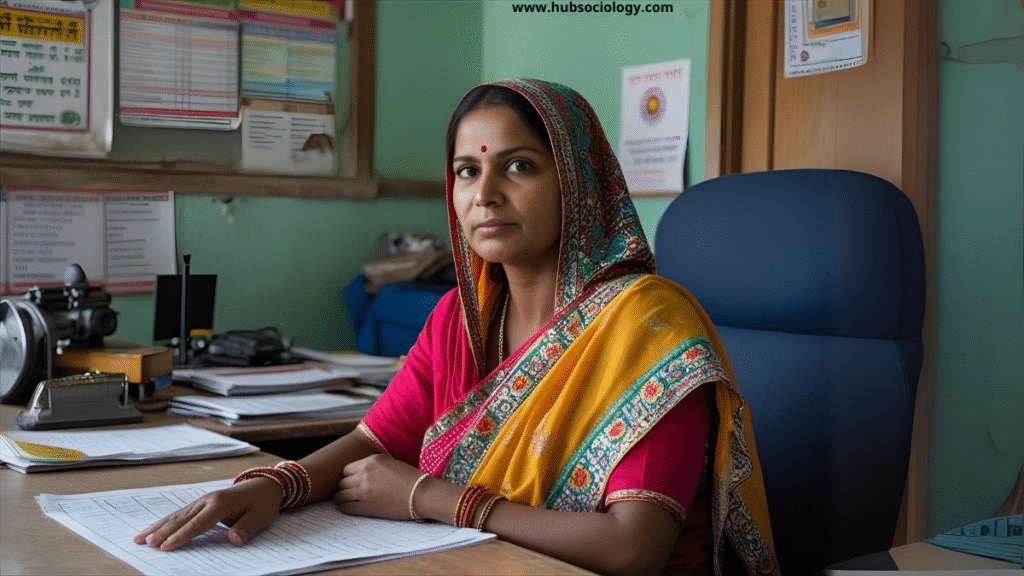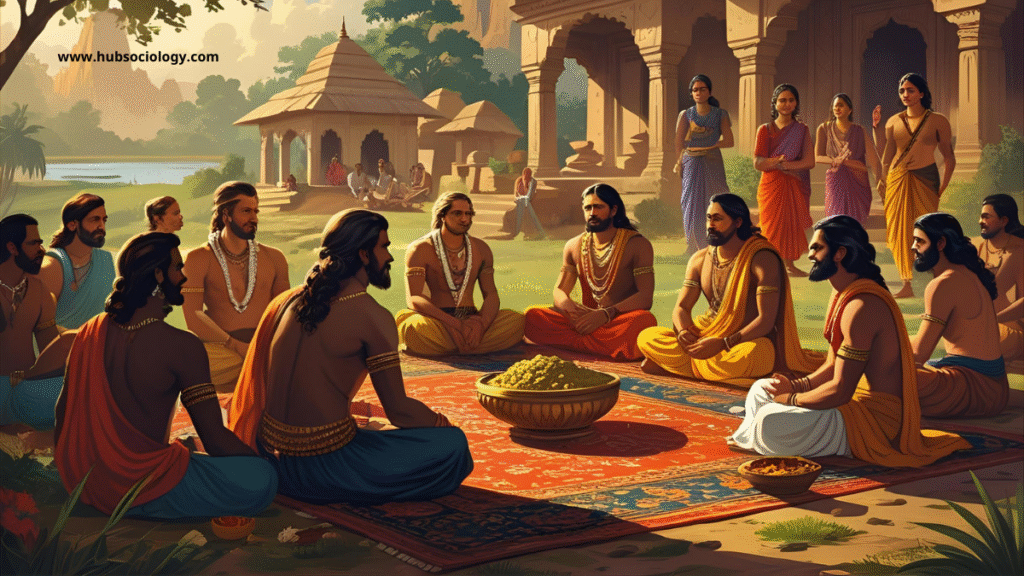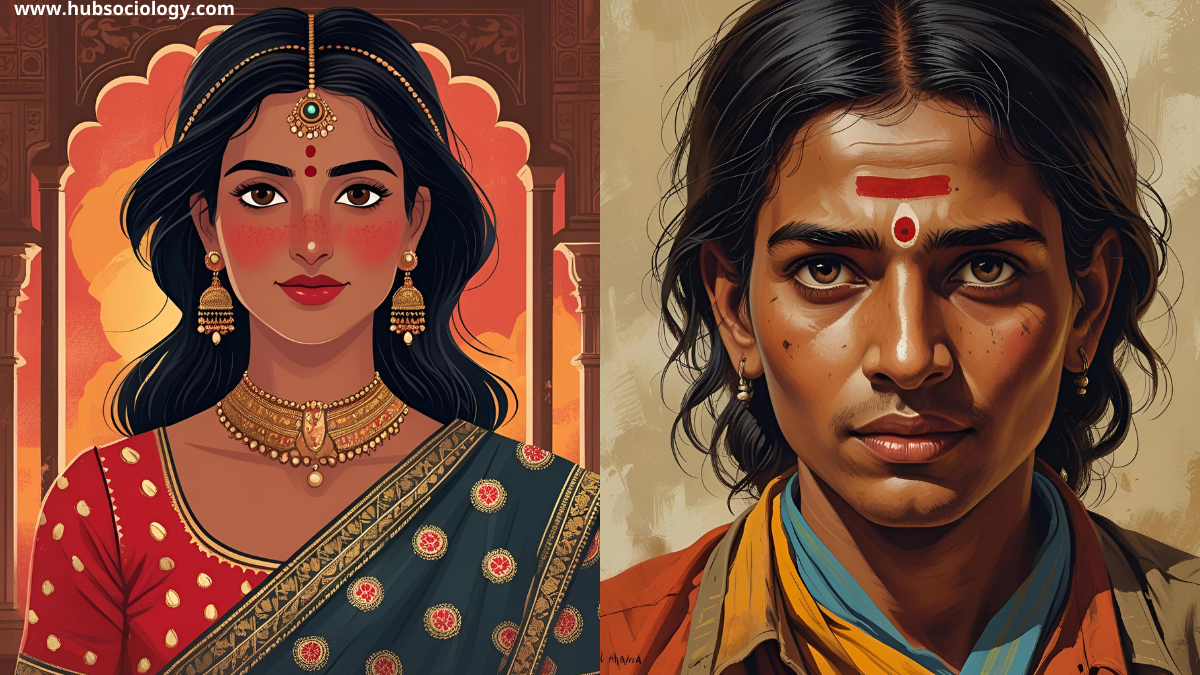Introduction on Caste and Political Elite
The relationship between caste and political elite in India remains one of the most defining aspects of the country’s democratic and sociological landscape. Caste, a historically entrenched system of social stratification, has not only influenced individual identity and community life but has also shaped political representation, power distribution, and elite formation. In India, the political elite—those who exercise significant power and decision-making authority—are deeply interlinked with caste affiliations. While modern democratic institutions promise equality, caste continues to act as a crucial determinant of political legitimacy, leadership, and access to resources. This duality creates a complex field of negotiation between tradition and modernity, hierarchy and mobility, exclusion and empowerment.
This article examines caste and political elite in India from a sociological perspective, exploring how caste-based hierarchies influence political power, how democracy has reshaped elite formation, and how caste identities continue to shape India’s political discourse.

Table of Contents
Caste as a Social Structure
Sociologically, caste is more than a religious or cultural system—it is a form of social stratification that regulates status, occupation, and marriage alliances. Historically sanctioned by Hindu scriptures, caste hierarchies created rigid boundaries between communities. However, with the onset of colonialism, industrialization, and modern education, caste began transforming into a dynamic political tool.
The introduction of electoral politics during British rule and post-independence democratic institutions opened new spaces for caste groups to mobilize politically. Caste groups that were historically marginalized began asserting themselves in the political sphere, challenging the monopoly of traditionally dominant castes. This transition highlights the sociological significance of caste as both a traditional order and a modern instrument of political negotiation.
Political Elite: Definition and Formation
In sociological terms, the political elite refers to individuals or groups who occupy positions of authority and influence within political institutions. According to C. Wright Mills, elites are those who make decisions with significant social consequences. In India, the formation of political elites cannot be understood without reference to caste. Political parties, electoral outcomes, and leadership patterns reveal that caste is a crucial resource in elite recruitment and legitimacy.

The political elite in India has historically been dominated by upper castes—Brahmins, Rajputs, Kayasthas, and Baniyas. However, with the deepening of democracy and the rise of social justice movements, middle and lower castes have increasingly entered the political elite, reshaping the nature of power.
The Nexus between Caste and Political Power
- Upper Caste Dominance in Early Politics
At the time of independence, India’s political elite was largely composed of upper-caste leaders who benefited from access to English education, colonial administration, and early nationalist movements. The Congress Party, which led the freedom struggle, was initially dominated by Brahmins, Banias, and other privileged castes. This reflected what sociologists call “cultural capital”—the inherited advantages that allow certain groups to monopolize opportunities. - Mandal Commission and the Rise of Backward Castes
A major transformation occurred in the late 20th century with the implementation of the Mandal Commission recommendations in 1990, which provided reservations for Other Backward Classes (OBCs) in government jobs and education. This not only uplifted marginalized communities but also enabled them to claim political representation. The emergence of leaders like Lalu Prasad Yadav, Mulayam Singh Yadav, and Nitish Kumar symbolized the rise of OBC political elites who challenged the hegemony of upper castes. - Dalit Politics and Ambedkar’s Legacy
Dr. B.R. Ambedkar’s advocacy for Dalit rights created a powerful discourse on social justice. The rise of the Bahujan Samaj Party (BSP) under Kanshi Ram and Mayawati represented the political assertion of Dalits. From a sociological perspective, Dalit politics demonstrates how historically oppressed communities mobilize collective identity into political power, thereby producing new elites from within marginalized groups. - Regionalism and Caste Mobilization
Caste identities also intersect with regional politics. In Tamil Nadu, Dravidian parties like the DMK and AIADMK emerged from anti-Brahmin movements, producing a new political elite dominated by non-Brahmin castes. Similarly, in Uttar Pradesh and Bihar, caste-based mobilization has shaped the rise of powerful regional elites.
Elite Circulation and Caste Dynamics
Vilfredo Pareto’s concept of the “circulation of elites” finds strong resonance in India’s caste-based politics. Over time, the upper caste monopoly over politics has been challenged by middle and lower castes, resulting in a continuous circulation of elites. However, rather than eliminating caste, this process often reaffirms caste identities. New elites, once marginalized, use caste solidarity as a political resource to consolidate power.
For example, the rise of OBC leaders in northern India restructured the political field, but also reinforced caste-based divisions by mobilizing their respective communities. This illustrates that while elite circulation increases representation, it also sustains caste as a primary marker of political identity.
Caste, Democracy and Political Modernization
Democracy in India has had a dual effect on caste and political elites:
- Empowerment through Representation: Universal adult franchise gave marginalized groups the power of numbers, making caste a decisive factor in elections. Political parties began mobilizing caste groups to secure electoral success, leading to greater diversity among political elites.
- Persistence of Hierarchies: While representation increased, caste hierarchies did not disappear. Instead, they re-emerged in modern forms of political bargaining, manifesting in candidate selection, coalition politics, and distribution of resources.
- Caste as Capital in Politics: In modern India, caste functions as a form of “social capital.” Political leaders derive legitimacy not only from policies and ideologies but also from their ability to represent caste interests. Thus, caste continues to be a powerful currency in political transactions.
Critiques and Challenges
Sociologists often point out the paradoxical role of caste in Indian politics:
- Democratization vs. Fragmentation: Caste has democratized politics by enabling participation of marginalized groups, but it has also fragmented the polity, making governance vulnerable to caste-based rivalries.
- Identity vs. Development: The excessive emphasis on caste identity often diverts attention from developmental issues such as health, education, and economic growth. Political elites may prioritize caste-based mobilization over long-term policy reforms.
- Elite Capture of Benefits: Even within marginalized communities, benefits of political representation are often captured by dominant sub-castes, leaving the most disadvantaged sections still marginalized. For instance, among OBCs, dominant groups like Yadavs or Kurmis often control political power, sidelining smaller castes.
Conclusion on Caste and Political Elite
The relationship between caste and political elite in India highlights the enduring significance of social stratification in shaping democratic processes. Caste continues to be a powerful determinant of political leadership, legitimacy, and power distribution. While democracy has facilitated the rise of new elites from marginalized groups, it has also entrenched caste identities as instruments of political mobilization.

From a sociological perspective, caste in Indian politics is not merely a remnant of tradition but an adaptive mechanism that negotiates with modern democratic institutions. The rise of Dalit and OBC leaders, regional caste-based parties, and ongoing struggles for social justice all testify to the dynamic interplay between caste and political power.
The challenge for India lies in moving beyond caste-based mobilization towards inclusive development while ensuring that political elites truly represent the diversity and aspirations of the people. As long as caste remains a central axis of social identity, it will continue to shape the contours of political elite formation in India.
Exam-style questions on Caste and Political Elite
5 Marks Questions on Caste and Political Elite
- Define political elite in the Indian context.
- Explain how caste influences political leadership in India.
- What role did Dr. B.R. Ambedkar play in shaping Dalit political consciousness?
- How did the Mandal Commission impact caste and politics in India?
- Mention two examples of caste-based political mobilization in Indian states.
10 Marks Questions on Caste and Political Elite
- Examine the role of caste in the emergence of regional political elites in India.
- Discuss the upper-caste dominance in Indian politics during the early decades after independence.
- Analyze the sociological significance of the Mandal Commission in reshaping elite formation.
- Explain the concept of “elite circulation” with reference to caste politics in India.
- Discuss the paradoxical role of caste in Indian democracy.
15 Marks Questions on Caste and Political Elite
- Critically analyze the relationship between caste and political elite in India from a sociological perspective.
- Evaluate the role of caste-based parties in transforming Indian democracy.
- How has democracy facilitated the rise of Dalit and OBC political elites in India?
- Examine the challenges posed by caste-based elite formation to inclusive development in India.
- Discuss caste as a form of “social capital” in Indian politics.
